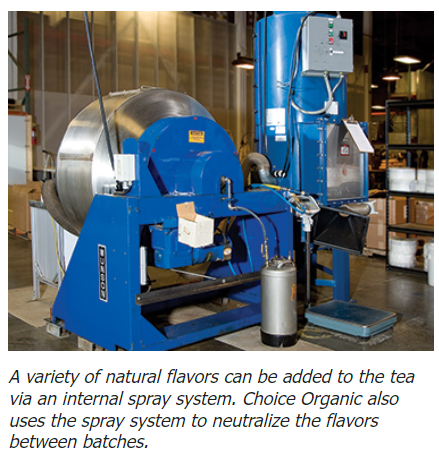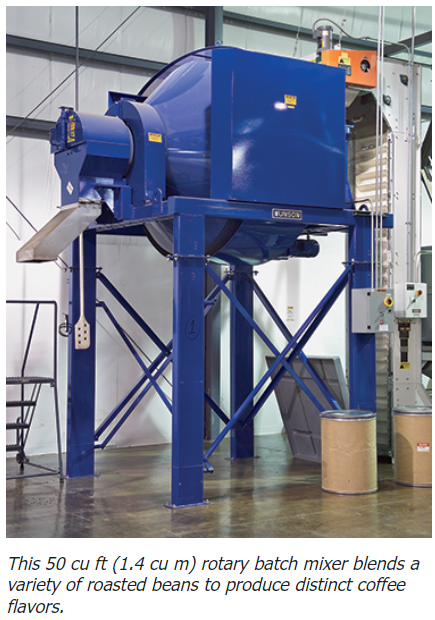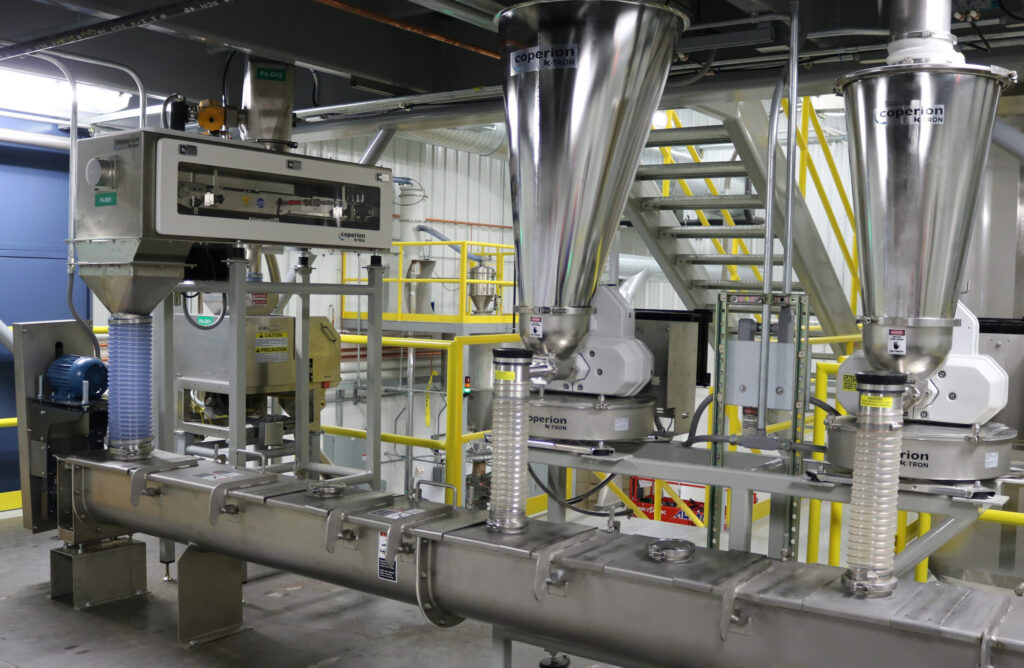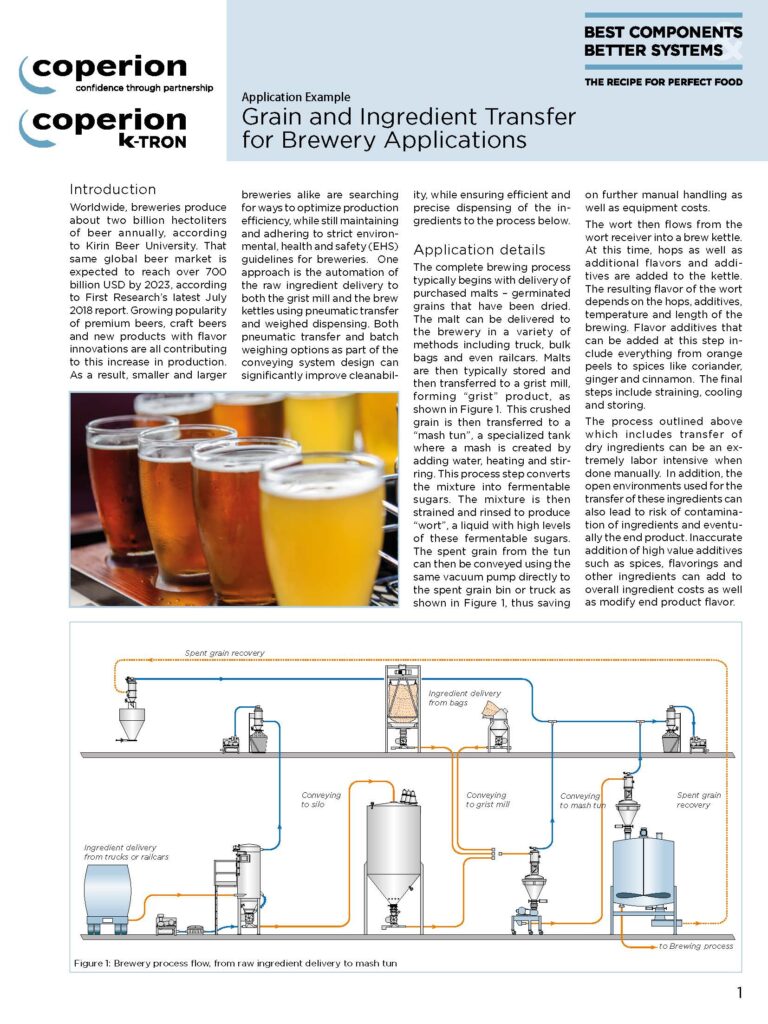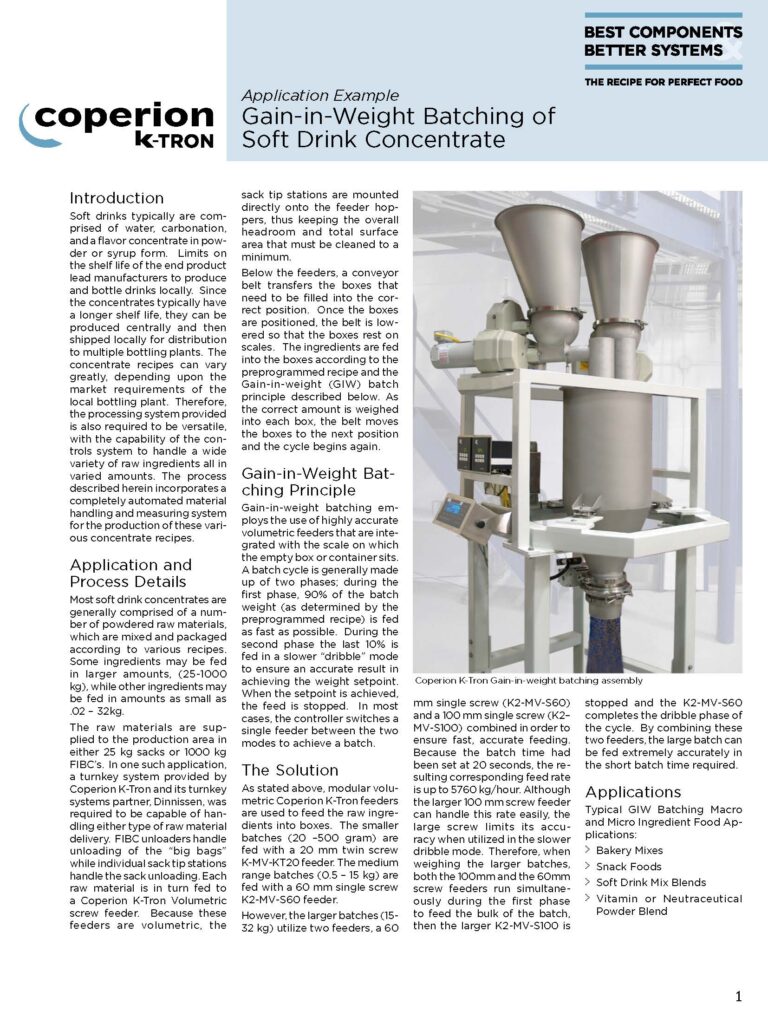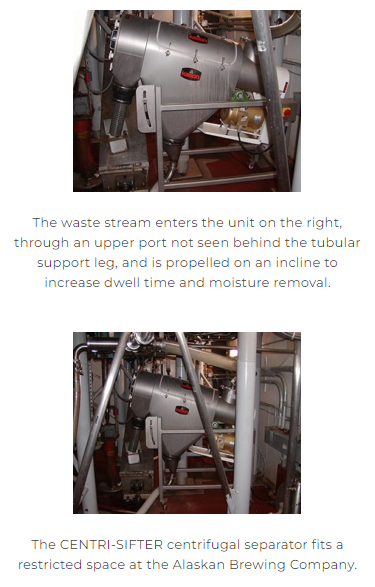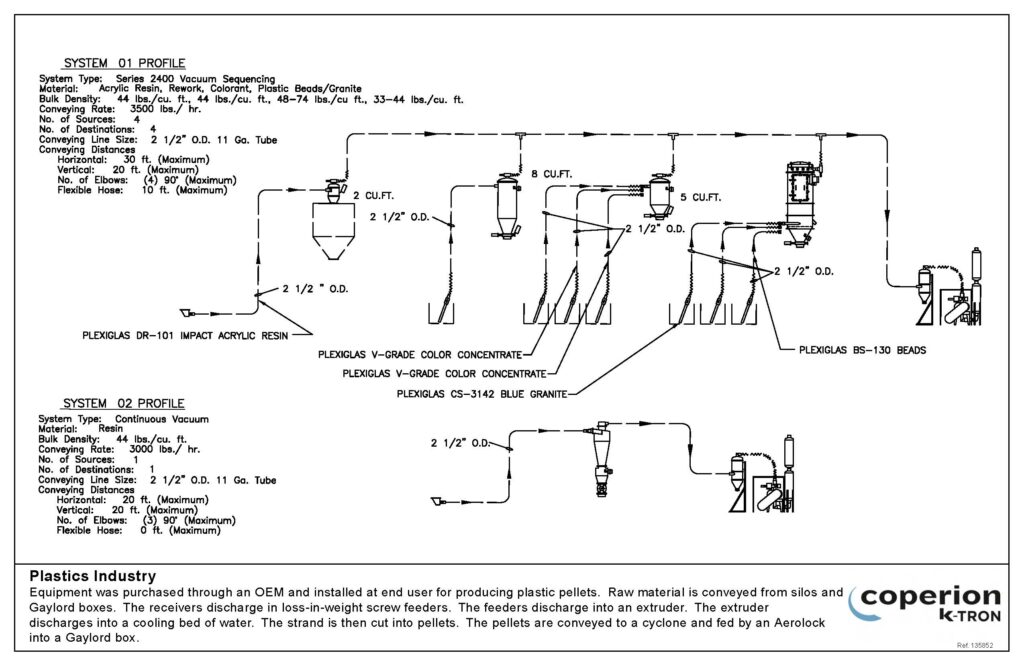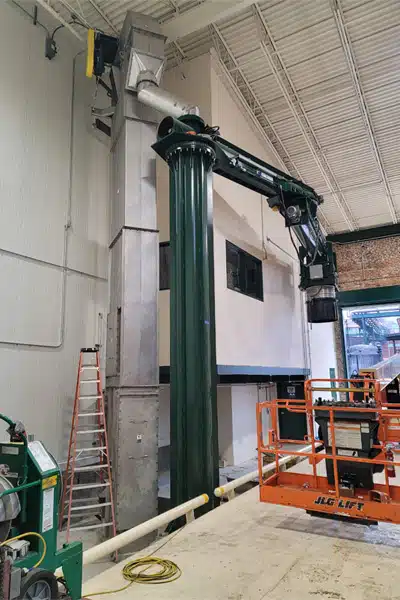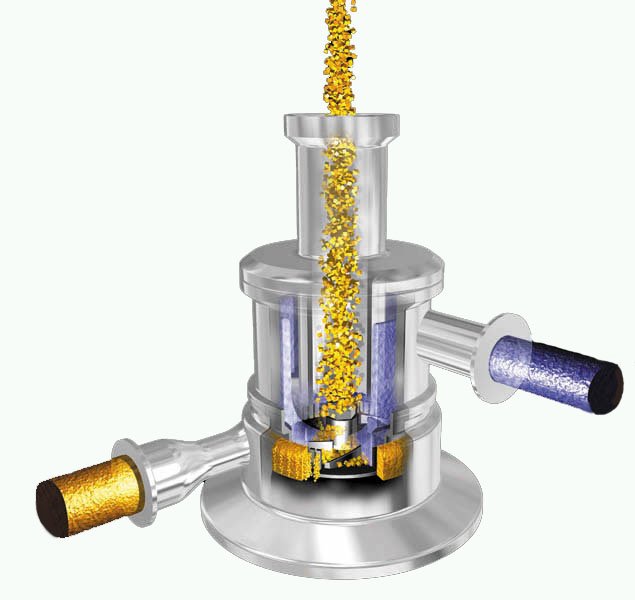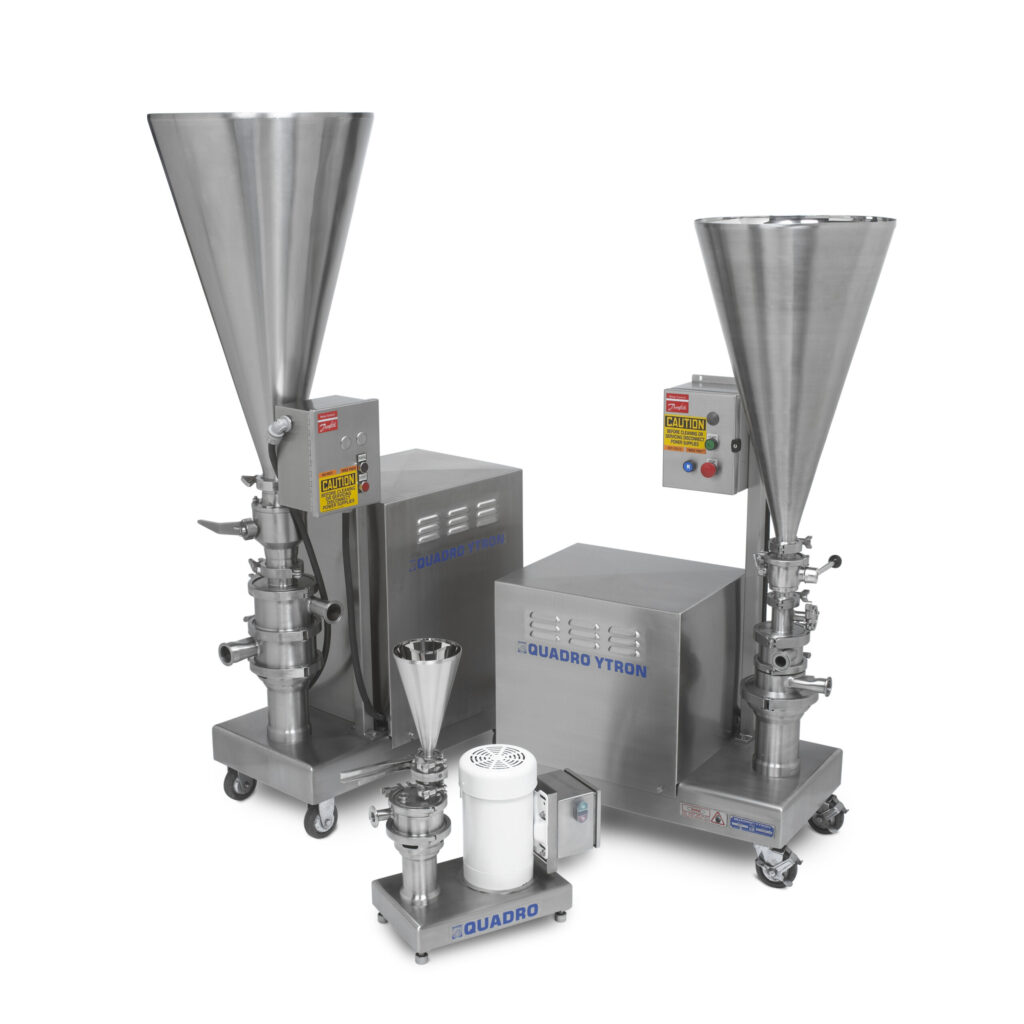Tea Blend Time and Degradation Cut with Rotary Mixer
The stainless steel Munson blender uses a gravity-driven mixing process, which employs internal mixing flights that produce a tumble-turn-cut-fold mixing action said to yield 100 percent batch uniformity in less than three minutes using minimal energy. Internal spray lines built into the mixer allow for a wide, even spray of natural flavors. The company runs the mixer continuously for 15 to 20 minutes per batch to prevent stratification of ingredients throughout loading and final discharge with no residual.
Tea Blend Time and Degradation Cut with Rotary Mixer Read More »

